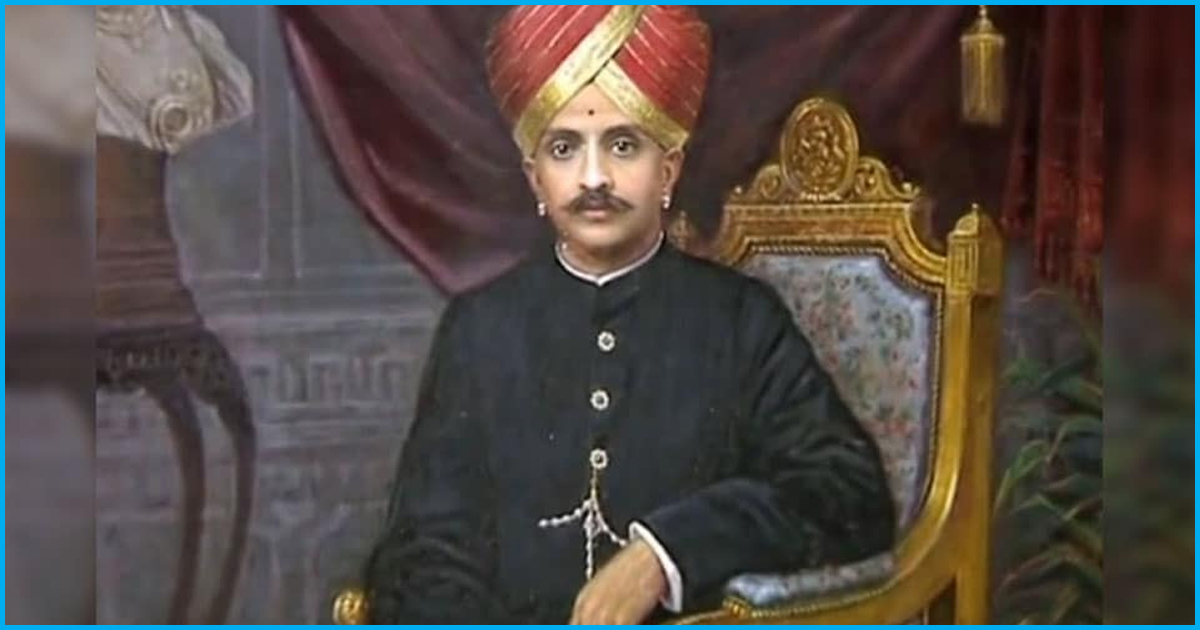
Birth Anniversary Of Mysore's 'Rajarshi' Krishnaraja Wadiyar; First To Introduce Compulsory Education For Children In India
4 Jun 2018 8:30 AM GMT
Nalvadi Krishnaraja Wadiyar, born on June 4, 1884, was the benevolent leader of the erstwhile princely State of Mysore from 1894 until his death in 1940. During his death, he was one of the wealthiest men in the world. The Krishna Raja Sagar reservoir, built during his rule, provided water to many farmers across the state.
He has been compared to Emperor Ashoka by many and Mahatma Gandhi called him Rajarshi, or “saintly king”, and his kingdom was described by his followers as Rama Rajya, which means that an ideal kingdom akin to the rule of Lord Rama.
His life
Krishnaraja Wadiyar IV (also called Nalvadi Krishnaraja Wadiyar) was declared king of Mysore at the age of 11 after the untimely death of his father, Chamaraja Wadiyar X. His mother ruled as the Regent and Krishnaraja took the responsibility of the throne at the age of 18.
“Krishnaraja Wadiyar IV, whom Mahatma Gandhi referred to as a ‘Rajashri’ or ‘saintly king’, was responsible for making Mysore a model, modern State. He championed causes like education of women, uplifting backward classes and promoting industry,” said Mansoor Ali, founder, Bengaluru By Foot, an organisation that conducts heritage walks. “Under his rule, Bangalore became the first Asian city to receive electricity in 1905. KR Market was the first building to be electrified,” reported Economic Times.
He was tutored by Sir Stuart Fraser, after whom Fraser town in Bangalore is named. He received education in Western studies, Kannada, Sanskrit and classical music. He was instrumental in setting up the University of Mysore. He himself served as the first Chancellor of Banaras Hindu University. He also helped in the setting up of industries including the iron and steel factory at Bhadravathi, Hindustan Aeronautics Limited, Government Soap Factory and Sandal Oil Factory.
While the world was facing war, Krishnaraja gathered his subjects in a bond of peace and harmony. Mysore was one of the first states to abolish child labour and he made it compulsory for children between 7 and eleven to get an education in 1913. In 1915, he abolished caste discrimination in school and asked them to admit Dalit students too.
“He worked with two of Mysore’s brightest dewans -Sir M Visvesvaraya and Sir Mirza Ismail. Their collaboration worked wonders in governance,” said Ali. “They planned projects whose benefits could be reaped even after 100 years, unlike politicians of today. Even though the rule was called the ‘Golden Age of Mysore’, our political leaders do not remember or acknowledge his contributions.” After his death in 1940, Krishnaraja Wadiyar IV was succeeded by Jayachamaraja Wadiyar.
Many experts are of the opinion that the cleanliness of Mysore is because of Krishnaraja. He laid emphasis on broader and well-maintained roads. He also set aside 900 acres of land for sewage treatment.
 All section
All section













